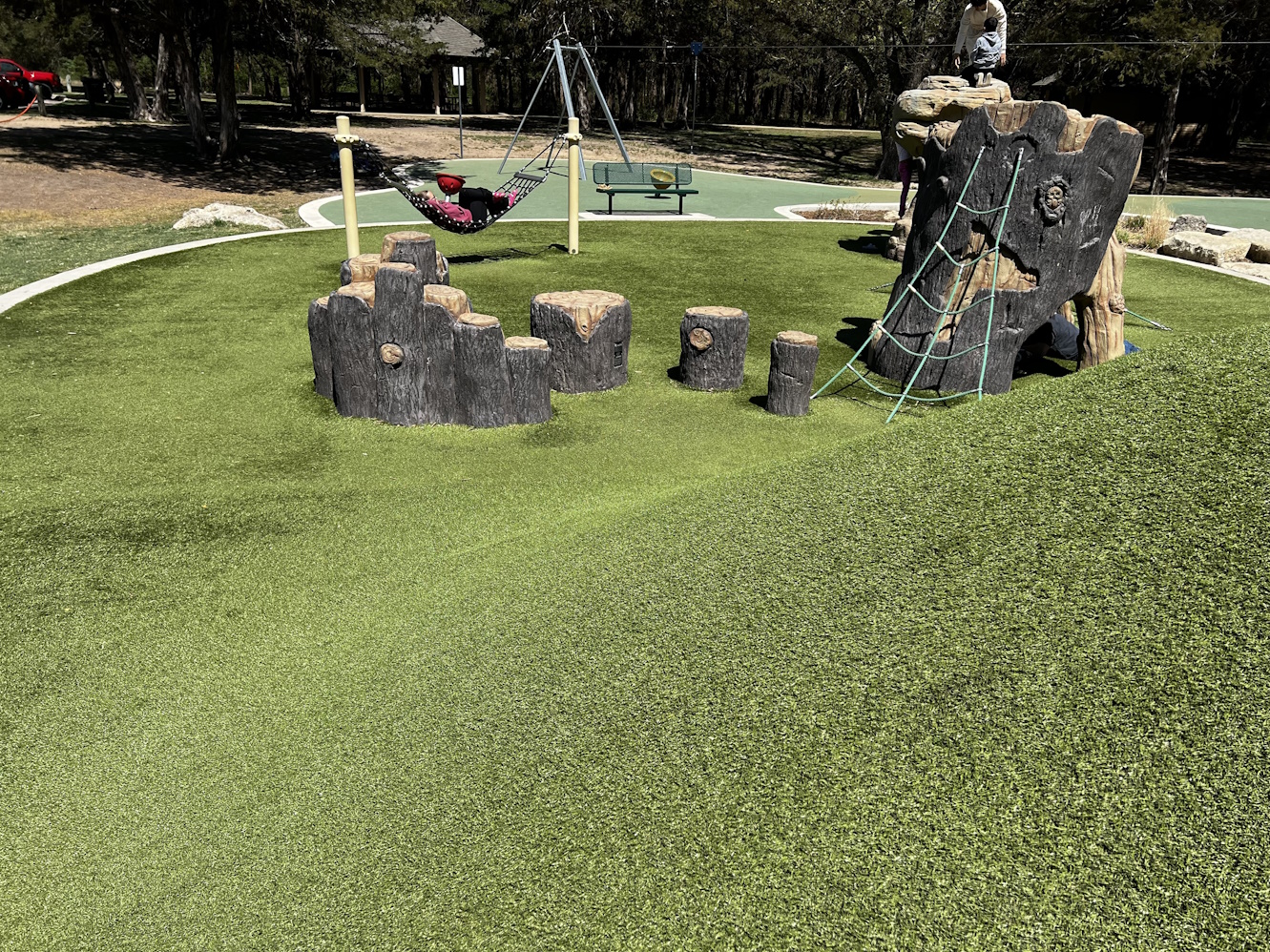By Michael R. Barnes
Artificial or synthetic turf has been a hot topic in the last few years. These man-made surfaces which intend to mimic the look and feel of natural grass have been gaining popularity, especially in the last decade, and specifically within the context of school and community sports fields. Recently, artificial turf surfaces have been making inroads into non-sports contexts such as children's playgrounds (Figure 1), and even some home lawns. Why is this the case? The adoption of artificial turf has mainly been driven by increased usability (even in inclement weather) which is especially important on sports fields, as well as lower maintenance requirements given that such surfaces don’t require mowing or irrigation for example. Despite the ongoing adoption of artificial turf little research has been done on how people feel about such surfaces.

In 2022, we conducted an online survey to begin to answer the question of how people perceived artificial turf and natural grass and found that individuals broadly preferred natural grass across a variety of use cases (e.g. having a picnic, playing with pets), and also viewed natural grass as overall more environmentally friendly than artificial turf. While online surveys can give us a broad picture of how people feel about these surfaces, they can often lack detailed reasons why someone feels a certain way. To remedy this, we followed-up the online survey by inviting individuals to experience both surfaces for themselves and then explain what they felt after such experiences. The results replicated those of the online survey but actually made the preference for natural grass even stronger in many cases. What were the reasons that people had these preferences? The three main areas were: Look and Feel, Performance and Use, and Human and Environmental Health. Some specific examples are highlighted below:
- Contrasts between the heat and abrasive texture of artificial turf with the cool and softness of natural grass
- Surface consistency and all-weather playability of artificial turf compared to uneven and poor drainage of natural grass
- Perceptions of heightened risk of injury on artificial turf
- Concerns around input (e.g. water) of natural grass surfaces
Taken together we can start to build a picture of the reasons why individuals prefer one surface over another across different use cases. From just the view examples above one can start to explain why no significant differences were found between the surfaces for sports related use cases with both surfaces having advantages and disadvantages. Conversely, we can also understand why other use cases where significant differences did exist were that way. For example, natural grass being preferred for having a picnic can be explained by comments on its cool and soft attributes compared to artificial turf being viewed as abrasive and too hot. You can explore more examples and individual responses by checking out the full paper “Nothing Beats Nature”: Park Visitor Preferences for Natural Turfgrass and Artificial Turf: A Case Study.”